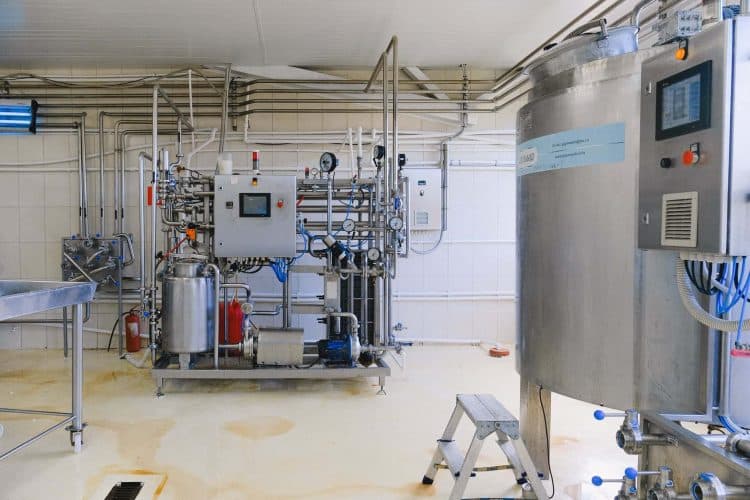The evolution of non-conventional extraction techniques focuses on green approaches, consuming as little organic solvent as possible, and selectively recovering high yields of desired products. These new techniques comprise ultrasound, microwaves, supercritical fluid, pulsed electric field, high-pressure liquid, and enzyme-assisted extractions.
Because of the superior quality of the extracts in comparison with other methods and the economic benefits of their industrial development, many efforts and experiments have been made to enlarge modern extraction laboratory equipment and improve operational parameters.
Scaling up an extraction process doesn’t just mean increasing vessel size and the amount of extracted biomass. Many theoretical and empirical studies must be done, taking into account several factors including instrumentation, batch/flow process, kinetics, economics, energy consumption, and quality and yield of the final extract. [1]
Extraction parameters should be optimised at the small-scale level and then be scaled up incrementally for higher volumes or quality, taking into account the above mentioned factors.
Within non-conventional techniques, the most investigated scale-up possibilities are supercritical fluid extraction (SFE) (several tons per day) followed by ultrasonic-assisted extraction (UAE) (few tons per day) and microwave-assisted extraction (MAE) (hundreds of kilograms per day) in addition to hybrid/combined technologies.
A general assumption is that the processing conditions and parameters will result in similar product yields and composition of extracts within the laboratory-scale setup and the industrial-scale process. But sometimes theory deviates from reality.
For example, during a study on scaling up carbon dioxide (CO2) SFE extraction of rosehip oil [2], it was found that the parameters chosen for the lab-scale equipment resulted in a slower extraction rate on the pilot scale, proving that the relationship between extraction rate and extraction conditions is not only linked to an external mass transfer coefficient, but may be related to other factors like flow heterogeneity, increases in solute dispersion, and transfer of oil droplets in recycled CO2.
Many studies on laboratory-scale UAE equipment have shown this technique to be one of the best non-thermal green extraction methods, as it is capable of providing great extraction yields in relatively short time with minimal energy consumption and solvent usage. Studies on ultrasound process intensification for a pilot-scale 20L extraction of chili peppers [3] showed that ultrasonic frequency was tightly linked to extraction efficiency: the extraction at 70 Hz frequency in an ultrasonic bath, operated at 1080 W power, led to lower yields of chili pepper capsaicinoids compared to 26 Hz frequency extraction. The generation of a large number of (smaller) cavitation bubbles may increase the formation of reactive oxygen species and can be detrimental for compounds prone to oxidation.
MAE has been widely used in efficiently and rapidly extracting many classes of compounds. The ability to extract compounds without using solvents makes scaling up this green technique desirable. Even if only few scale-up MAE experiments have been made so far, great reproducibility and promising results are evident: it was reported that a solvent-free microwave reactor working in scaled-up mode at 1500 W (x4 for four magnetrons) and 2450 MHz with a 75L vessel extracting 3kg of rosemary resulted in comparable essential oil yields to the laboratory-scale equipment (0.50% vs 0.54%, respectively). [1]
It is necessary to find scale-up criteria for non-conventional extraction techniques to succesfully reproduce laboratory results to full-scale production. This prominently includes efficient equipment design. Moreover, this challenging task has to be linked to parallel development of suitable analytical methods to monitor the extraction process and to ensure high extract quality and yield.
References:
[1] Belwal T, et al. Recent advances in scaling-up of non-conventional extraction techniques: learning from successes and failures. Trends in Analytical Chemistry. 2020;115895. doi:10.1016/j.trac.2020.115895 [Journal Impact Factor = 9.801] [Times cited = 23 (Semantic Scholar)]
[2] Del Valle JM, et al. Supercritical CO2 processing of pretreated rosehip seeds: effect of process scale on oil extraction kinetics. The Journal of Supercritical Fluids. 2004;31(2):159–174. doi:10.1016/j.supflu.2003.11.005 [Journal Impact Factor = 4.577] [Times cited = 66 (Semantic Scholar) ]
[3] Boonkird S, et al. Ultrasound-assisted extraction of capsaicinoids from Capsicum frutescens on a lab- and pilot-plant scale. Ultrasonics Sonochemistry. 2008;15(6):1075–1079. doi:10.1016/j.ultsonch.2008.04.010 [Journal Impact Factor = 7.491] [Times cited = 120 (Semantic Scholar)]











